Oleh Chris Grinter, on July 1st, 2010 And now for the even more infrequently reoccurring series, vox populi! For those without scarring high school memories of latin class (through no fault of my teacher) I’ll bring you up to speed – the title roughly translates to “voice of the people”. Here is another old e-mail that I’ve been saving. It is a 100% real message, but of course I have redacted the real names and addresses to protect the innocent. Enjoy! I also highly encourage submissions of your own-
Winter 2008:
“Di sana, I’m so glad I found you. Sekarang, I hope you can help me. 1982, while camping at an old gold mining camp in the Mendocino National Forest I was bitten by a large brown spider. It took three days for the venom to pass through my system. On day three I was 95% blind, the bite swelled to a large grotesquely deep red bump on my arm. I’ll never forget the 12 hours the venom attacked me. The price I payed to survive this spiders venom was…….to loose absolutely all my body fat. I spoke with a doctor from Santa Rosa by phone from a friends place in (some small CA town). He knew about this spider and couldn’t believe I suvived the venom when I told him I lost all my body fat. He also told me it was impossible for someone to survive loosing all their body fat in 12 jam. I reminded him that this was an impossible situation. He told me that this spider is being kept from the public. I believe this spider came from China or Russia. These spiders don’t share anything with other Cali spiders. They have big bodies and short stout legs. The female that bit me was about 4 inch’s and, had 5 males. Four years later, while living in the Hayward hills, I couldn’t believe my eyes, running across the floor, another one. This spider was about 6 inch’s. I know these spiders don’t climb walls or spin webs. They build nest’s, and obtain 4-5 males to protect her and find food. The female never leave’s the nest except…………when a larger female drives her out and, kills her males. This is when people are bitten by this spider, as she runs around looking for another nest. Bites are very uncommon. I wondered………….how big was the female that drove that 6 inch from her nest. Dan………….how big do they get. Can I find this spider on display at (your museum)? Is it possible to find all the information their is on this very dangerous spider?”
Continue reading Vox Populi, volume II
Oleh Chris Grinter, pada 26 Juni, 2010 Selamat volume delapan dari seri konsisten reoccurring, Genius Pers. I came across artikel ini recently regarding an endemic Puerto Rican butterfly. Siapa yang bisa memberitahu saya persis mengapa laporan ini menyesatkan? Ini mungkin sedikit rumit daripada GOP standar (Saya sarankan membuang setiap akronim terkait sebelumnya dengan surat-surat). Hint, just telling me the butterfly in the picture is from Malaysia is not the answer I’m looking for!
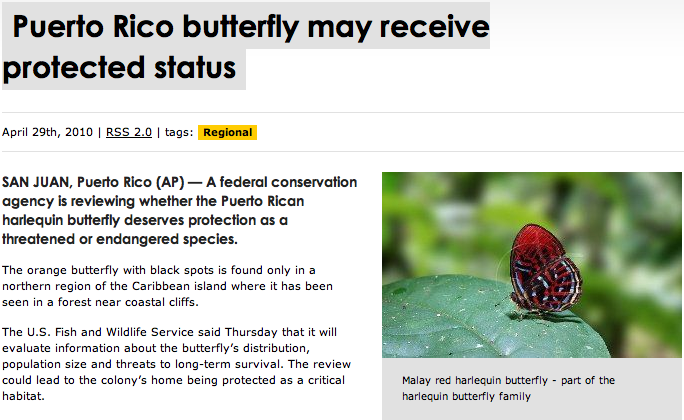
Oleh Chris Grinter, pada 23 Juni, 2010 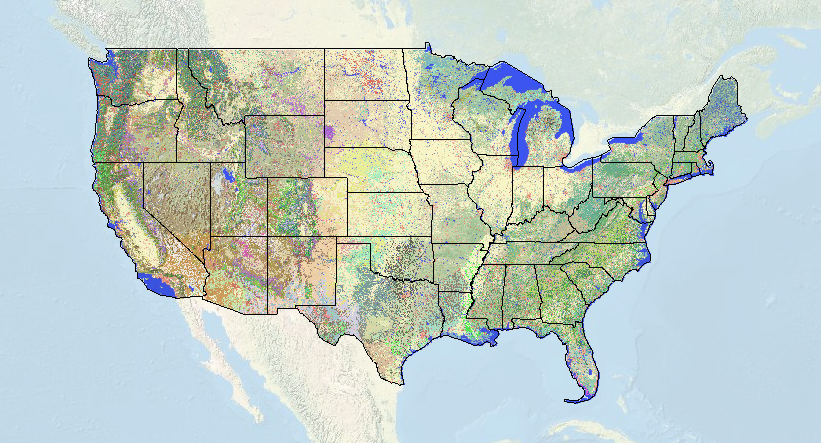
Saya selalu bertanya-tanya bagaimana menemukan terminologi yang tepat untuk tutupan lahan di daerah tertentu. Biasanya, Aku hanya kasarnya sesuatu di sepanjang baris “ek kaparal”. Tapi sekarang saya bisa menggunakan ini peta baru yang mengagumkan dibawa ke kami oleh USGS/Infrastruktur Informasi Biologi Nasional. Tingkat detail luar biasa, dan Anda dapat menentukan tingkat akurasi dengan tab tarik-turun (1-3). Sekarang dengan peta topo AS definisi tinggi, saya dapat melihat dengan tepat di mana tegakan pinus monterrey terbesar berada (sebenarnya itu adalah Hutan Konifer Tertutup Pesisir California dan Hutan) jadi saya bisa menempatkan jebakan saya secara optimal akhir pekan ini.
Continue reading Landscape Cover Map
Oleh Chris Grinter, tanggal 18 Juni, 2010 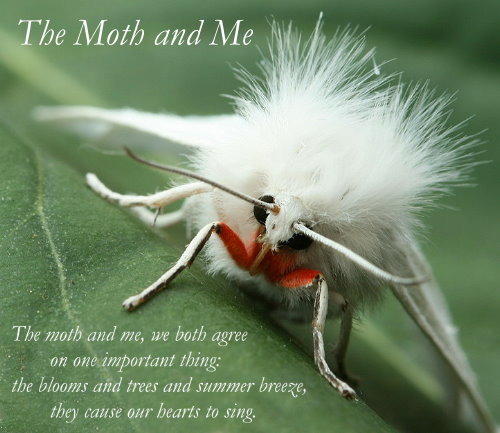
Selamat Datang di The Moth dan Me #12, dan blog carnival pertama saya. Meskipun blogging untuk beberapa bulan saya belum kita lihat kembali dan merenungkan bagaimana saya menjadi terpikat dengan lepidoptera di tempat pertama. Mengingat waktu atau lokasi di mana hal ini terjadi adalah mustahil, and like many of my colleagues and I’m sure many of my readers, I had a butterfly net and “bug cage” in hand as soon as I could walk. When it comes to entomology I believe almost everyone falls in love at first with a large and striking insect. For me it was a butterfly, naturally. I can remember staring for endless hours at the diversity of Ornithoptera and Papilio illustrated in Paul Smart’s famous book. Somewhere along the way in pursuit of something new I began to stray into the nocturnal world. Moths comprise the majority of the diversity of Lepidoptera; while there are nearly 11,000 species in the United States, only a few hundred are butterflies. This quickly opened a door (maybe into an abyss…) to the shocking abundance found everywhere around us. This amazing diversity has now drawn me deep into the biology and evolutionary history of the Lepidoptera. Editing these fourteen contributions of moth blogging together I just can’t help but to reflect back on some of my own mothing journey.

Perhaps if I was a child in Europe this moth (Deilephila elpenor porcellus) would have been the first to catch my eye. Over at Urban Moths Ron Laughton has discovered the stunning diversity in his own back yard in much the same way as I did growing up here in the US. Take a look at the types of traps he has been using, most of which he constructed himself. One of the best behaviors of moths is their willingness to dive headlong into the light. Not too far from Ron, Mike Beale has been blogging british moths as well. It can be pretty amazing just how similar our two faunas are (a few moths actually are the same).
Continue reading The Moth and Me #12
Oleh Chris Grinter, tanggal 11 Juni, 2010 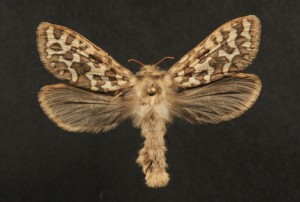
Ngengat ini hanya sekitar sebagai langka seperti senama paranormal yang (kecuali bahwa itu nyata) – itu adalah Gazoryctra sp. dalam keluarga Hepialidae. Mereka mewakili keturunan basal dari Lepidoptera dan umumnya dikenal sebagai ngengat hantu atau ngengat cepat. Hantu – karena jantan dari beberapa spesies diketahui terbang dengan leks sejati, di mana mereka melayang-layang di tempat terbuka berumput saat senja sementara betina mengamati. Laki-laki yang sama ini juga memanggil perempuan dengan feromon, sedikit situasi terbelakang dengan serangga. Cepat- agak jelas sendiri, tetapi spesies boreal dikenal sebagai penerbang yang kuat.
Salah satu fitur yang membantu menunjukkan ini sebagai garis keturunan basal adalah penempatan sayap pada tubuh, beberapa venasi sayap, bagian mulut yang berkurang atau tidak ada dan tidak adanya perangkat kopling sayap yang kuat. Ngengat ini memiliki “kuk”, yang merupakan ibu jari kecil seperti proyeksi dari atas sayap belakang. Garis keturunan ngengat lainnya memiliki mekanisme kopling ketat yang dikenal sebagai frenulum dan retinaculum, di mana bulu menghubungkan kedua sayap bersama-sama sehingga mereka tetap berpasangan selama penerbangan. Saat istirahat jugum terlipat dan mungkin membantu menyatukan sayap – tapi tidak saat dalam penerbangan; sayap depan tidak sinkron dengan sayap belakang dan penerbangan tidak dinamis (Scoble 1992).
Di Amerika, biologi Hepialid sangat kurang dipahami. Hanya segelintir sejarah kehidupan yang dijelaskan secara global – yang semuanya tampak endophagous (membosankan) dalam sistem akar tanaman. Beberapa larva instar awal mungkin makan di serasah daun atau di bawah tanah pada sistem akar sebelum memasuki rimpang. Australia beruntung memiliki fauna Hepialidae yang beragam dan mengesankan – banyak yang berwarna cerah dan sangat besar (250mm atau hingga 12 inci!), dan belajar sedikit lebih baik. Beberapa larva bahkan cukup umum sehingga suku asli telah menggunakannya sebagai sumber makanan pokok.
Tapi kembali ke ngengat ini khususnya. Saya mengumpulkannya di perangkap cahaya hitam saya Agustus lalu di Sierra Nevada sekitar 10,500 kaki. Spesiesnya tidak diketahui, dan mungkin baru. Bagian yang paling membuat frustrasi adalah bahwa itu adalah satu-satunya spesimen yang diketahui sains. Seluruh genus sangat langka, kecuali untuk satu atau dua spesies biasa, hanya beberapa lusin spesimen yang ada. Jadi apakah itu betina dari spesies yang dideskripsikan hanya dari jantan? Penyimpangan aneh dari spesies yang dikenal? Atau mungkin itu benar-benar baru. Saya telah membuat barcode DNA, yang sebenarnya tidak memberi tahu saya apa pun karena tidak ada urutan nol dari spesies yang terkait erat. Sebenarnya, sejauh yang aku tahu, spesies lain di Sierra bahkan belum dikumpulkan selama beberapa dekade jadi saya bahkan tidak bisa mendapatkan urutan dari spesimen yang lebih tua. Lapisan gula pada kue adalah perilaku mereka. Mereka jarang, jika seandainya, datang ke cahaya – yang mungkin merupakan hasil dari penerbangan krepuskular mereka. Pada malam yang tepat mereka mungkin berada di sayap untuk 20-30 menit, biasanya perempuan mencari laki-laki, atau seekor betina terbang untuk bertelur (sepertinya hanya menyiarkan telur mereka bertebaran di tanah). Jadi, pada akhir Agustus ini, saya akan kembali ke Sierra yang tinggi dengan beberapa sukarelawan dari departemen entomologi dengan harapan dapat melihat satu jagoan saya di lereng yang curam.. Jika saya mendapatkan lebih banyak, itu mungkin menjadi spesies baru yang mengesankan untuk California.
Oleh Chris Grinter, tanggal 11 Juni, 2010 Who can see what’s wrong with artikel ini?

Oleh Chris Grinter, pada 9 Juni, 2010 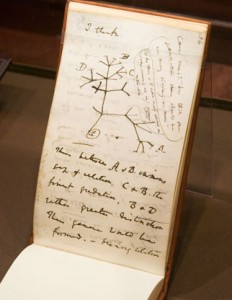
This recent article in the American Naturalist has taken a second look at some of the famously inflated species estimates, beberapa akan setinggi 100 juta (Erwin, 1988). Perkiraan yang dilakukan oleh penulis menunjukkan bahwa proyeksi di atas 30 juta memiliki probabilitas <0.00001. Rentang perkiraan mereka lebih mungkin antara 2.5 dan 3.7 million species (with 90% confidence). This seems somewhat reasonable given that these extraordinary estimates were based heavily on extrapolation. There are clearly many difficulties in assessing diversity based on tropical arthropod surveys – this paper again uses phytophagous (plant-eating) beetles for estimates. They are careful to point out that these methods do not account for non-phytophagous insects, but assume that they will follow traditional biogeographic patterns of diversity. This is somewhat of a new concept given that when I was in college I was taught that parasitoids are counterintuitively not more diverse in tropical regions. This hypothesis is more often than not being proven false in the light of more precise modern taxonomic methodology. Rather proudly I helped play a role with the parasitoid project at the UIUC. Pendeknya, host specificity is more extreme in tropical environments with hundreds of cryptic species hidden amongst rapidly radiating groups such as the microgastrine Braconids (Hymenoptera) – the same has held true across similar taxa.
One interesting note about the paper is their inclusion of a secondary estimation based on Lepidoptera canopy assemblages. They assumed that a) all Lepidoptera can be found in the canopy and b) that all leps are phytophagous. This is clearly a very conservative estimation given that not all Lepidoptera are found in the canopy and not all are phytophagous. While I do not have the numbers on hand, a certain percentage of lep diversity must have been excluded from these estimates. I will also go out on a limb and assume that the authors (Novotny 2002) did not include microlepidoptera morphospecies – and most likely estimated abundances with our current taxonomic understanding. However I do not have access to this 2002 paper, so I may be incorrect. Using these Lepidoptera numbers (from the same survey as the Coleoptera) a global diversity was estimated by Hamilton et. al. at around 8.5 millions arthropod species.
While I agree that extraordinary estimates of tens of tens (or hundreds) of millions of arthropod species are probably ridiculous; I am of the camp that current research is indicating that estimates of the lower tens of millions of species are possible. The authors have failed to include research that counterbalances their premise that tropical species exhibit a lower beta diversity (Novotny 2002, 2007). In the same journal, Alam 2007, Dyar et. al. have indicated that the American tropics exhibit a higher beta diversity than previously assumed. Either it can be said that estimates of beta diversity in the australasian tropics are incorrect, or they are incompatible with species assemblages of neotropical forests. All of this speaks to the difficulty in extrapolating estimations of species across all tropical regions. These estimates are based on comprehensive insect surveys of New Guinea, perhaps they do not accurately reflect the true diversity of American tropical forests, and these number ranges are low.
As a final thought, most assesments are focused on tropical arthropods. It seems all too possible that the total number of all species, including bacteria and archaea, can easily exceed tens of millions. But extrapolating those numbers is even more precarious than arthropods, given the extreme lack of knowledge we have.
Oleh Chris Grinter, pada 4 Juni, 2010 
Tidak dapat menemukan cara untuk menghubungkan video langsung (bahkan tidak VodPod), but here is the link to the Daily Show site. Berapa banyak fisikawan menarik rambut mereka ketika mereka mendengar satu ini? Astaga, ia adalah juru bicara baru diangkat. Jangan khawatir Neil, Anda tidak ke mana-mana setelah ini.
Having not aired yet I can’t tell exactly how apologetic the show adalah, but it seems heavily focused on finding the “creator”. I can hear it in John Stewart’s voice when he pulls back from ripping into Freeman’s “god of the gaps” theory. Perhaps there was an edit and we missed the question where John Stewart asked “Morgan, can you define a logical fallacy for us… perhaps the god of the gaps one?” I believe that any physicist who ever says “god was responsible” says it with no deeper meaning than when Einstein famously evoked god’s dice. That’s to say, a non-literal and non-personal god found only in the beauty and splendor of nature.
Oleh Chris Grinter, pada 2 Juni, 2010 
Jika ada satu hal yang saya pelajari di perguruan tinggi, itu cara mudah mengalihkan diri. Saya cenderung untuk menjaga TV saya di di latar belakang saat saya bekerja di komputer saya, terutama larut malam ketika saya biasanya berperang menang melawan tidur. The other night something did catch my eye: a man holding dowsing rods in his back yard. Volume up, let the bullshit flow. It was just a flash of idiocy in an otherwise good program on home improvement. I’ve become accustom to crap-based TV on networks such as the History Channel or a Discovery network (quality of their shows include gems like “The Haunted: ghosts and pets”), but I was a little surprised to see BS grace my local PBS station.
Over on the “American Woodshop” host Scott Phillips was constructing a beautiful garden arbor. You can watch the entire thing here for free: Episode 1609: Period Architectural Moldings and Trim. There are no time stamps on the clip, but the dowsing comes in around the mid-point. While demonstrating the materials needed to secure the wood to the ground he cautioned against digging haphazardly into your yard without knowing where the underground water, electrical or gas lines were: solid advice. So in order to do this you should (diparafrasekan) “take pieces of coat-hanger, anything will do, turn them into an “Itu”. As I walk forward the bars cross – there (they cross) – right there is the irrigation line. 9 dari 10 people have this ability, but you should call in a professional if there is any doubt“. My translation “OK guys, don’t worry about calling in some guy to do this, figure it out this way”. Please tell me what man who seriously watches a home improvement show at midnight would cede authority to someone else before giving it the good ol’ college try? Even if we grant for a moment that 9 dari 10 people could do this, what about that one guy who can’t? Isn’t it irresponsible to suggest that you can avoid power/water/sewer/gas only 90% of the time? Ups, hit that pesky gas line…
Being a scientist, a skeptic and a procrastinator – I wrote Scott a message about this so I could avoid my work at hand. Today he kindly replied saying: (excerpt)
“Our bodies are electromagnetic fields. Disrupt a field and things happen…. I learned the technique mentioned from a city worker that they used to find lines. Not from a charlatan. My team witnessed the objective use of this technique.”
Briefly, tidak, our bodies are not electromagnets. Everyone can hold a compass, or TV… without screwing them up. Franz Mesmer coined the idea of “Animal Magnetism” in the last half of the 18th century (also invented “mesmerization” AKA hypnotism) – and had it abruptly debunked by Benjamin Franklin and others. I’m also a bit worried to hear that city workers are relying on dowsing to locate public lines! But to move onward, let us dig into the myths of dowsing. I agree that there seems to be somewhat of an intuitive truth when it comes to dowsing, however false it is scientifically, it remains compelling. Tentu… electrical things underground effect sensitive wires above. And wow, look at all these guys who can find water, or power, atau… lost people… atau bombs? Oke, let’s stick to water for this conversation.
(continued)
Continue reading An Uphill Battle
Oleh Chris Grinter, pada 1 Juni, 2010 Hanya beberapa gambar umum Leps California, diambil sepanjang rentang pantai dekat Santa Cruz beberapa minggu yang lalu. Mulai bekerja dengan cara saya melalui beberapa foto backlog…

Euhydryas chalcedona
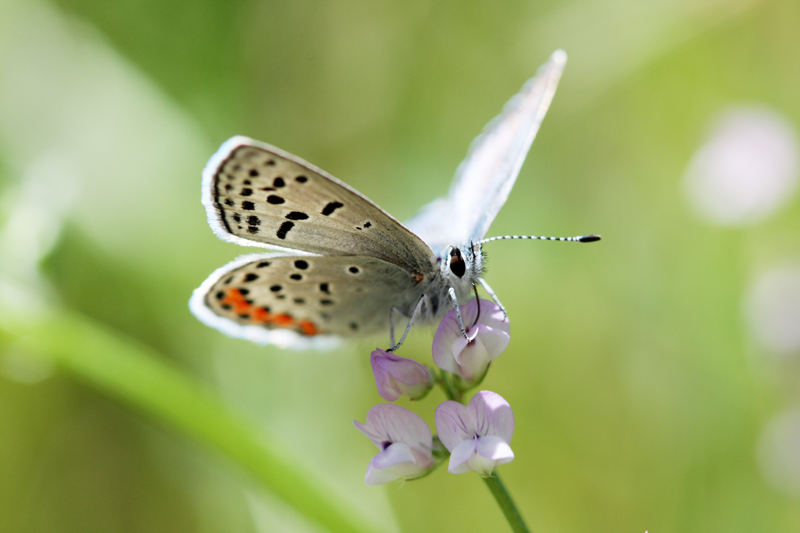
Plebejus Azmon
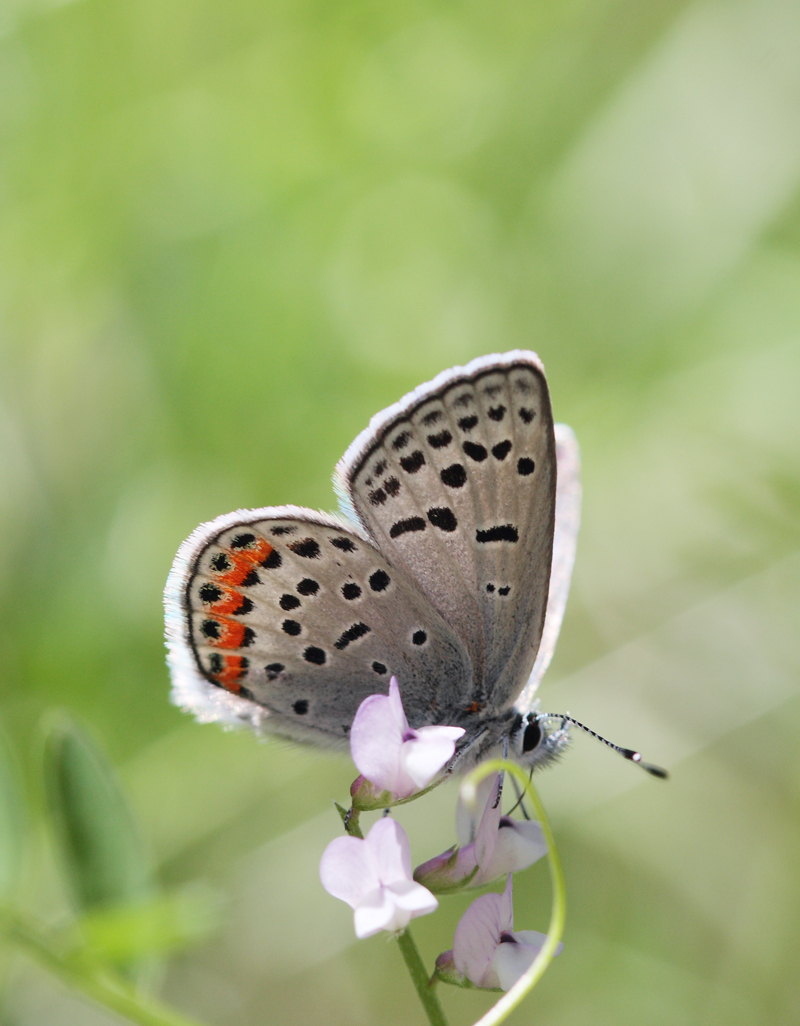
Plebejus Azmon

Ethmia arctostaphylella on Eriodictyon sp.
One interesting note on Ethmia arctostaphylella – the name is a misnomer, it does not actually feed on Arctostaphylos (Manzanita). At the time of description in 1880 Walsingham had found larvae pupating on leaves of manzinata and assumed it was their host plant. In Jerry Powell’s stunning monograph of the group he indicates this moth was reared from Eriodictyon – which happens to be the flower the moth is perched on. The two plants grow side by side, and it’s pretty easy to see how a wandering caterpillar finds its way onto a neighbor.
|
Keraguan
|













